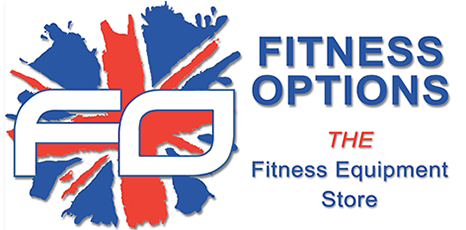
How do You Plan the Perfect Home Gym
Buying the right fitness equipment and building your own home gym involves many difficult decisions. So we are going to outline how to set up a home gym and how to decide on the right fitness equipment, fitness equipment that will still provide you with the specific fitness benefits you are seeking.
Space allotment is a key consideration in setting up a home gym and choosing the right fitness equipment. Are you putting together a gym as part of your living room or have you allocated a designated area in an attic, garage or spare bedroom? Always consider the amount of space and the atmosphere of the area where you will be placing this fitness equipment and working out. Before you buy any fitness equipment carefully analyse your home and where this home gym along with your body will take shape. First measure the dimensions of you workout area. While most homes and apartments can accommodate an exercise mat or stationary bike, not every living space can handle a multi gym or an elliptical trainer. If you are converting the area to a gym for workout and then back to a living space afterwards, then look for fitness equipment that can be folded or stored easily.
The ambience of the room is important. Using fitness equipment in a cold, damp shed with nothing more than a wooden wall to look at will do nothing for you motivation. Try to place the fitness equipment in an area that is light, airy and warm. Place a TV on a wall bracket that can be swivelled round so that you can watch it wherever you are in the room or fix up a sound system so that you can listen to your favourite classical music or rock tracks.
Once you have decided where you are going to put this fitness equipment then you need to make sure you accomplish some if not all the main elements of fitness.
There are four key areas one must take into account when considering fitness equipment and setting up a home gym: aerobics, strength, stretching and monitoring. If you get fitness equipment that will allow you to address each of these categories, you are on your way to achieving an excellent workout at home.
We believe monitoring is the home fitness element that is least considered; yet probably the most important feature in any workout. Measuring your heart rate with a heart rate monitor is essential to maintaining health; measuring your body fat with a pair of bodyfat scales is essential considering you may gain a few pound but it could all be muscle. There are a number of fitness monitoring devices available today, promising to keep tabs on your cardiovascular system, including blood pressure, working heart beat and recovery heart rate – helping you maintain a safe activity level for your age and weight group.
Cardiovascular maintenance is a key factor to take into account. An aerobics programme can consist of something as inexpensive as an exercise mat and a workout video. Add a skip rope and you’re all set. An alternative to the exercise mat is a rebounder. These mini trampolines are easy to use, take up very little space and offer an extremely low impact workout. Rowing machines, exercise bikes, ellipticals and treadmills are excellent pieces of fitness equipment for improving cardiovascular endurance. A number of treadmills, ellipticals and rowers now fold or stand upright, making them very compact when stored. However if you are fortunate to have the space to leave the fitness equipment down then we advise you do so. Remember the old adage, out of sight, out of mind.
To improve muscle size and strength you will need fitness equipment that provides some form of variable resistance. The cheapest method is a selection of bars and free weight discs. Add a weight training bench and you have a combination that virtually offers a limitless range of weight training exercises. Free weights are very effective, as they require you to use a full range of stabilising muscles in the execution of each lift, increasing muscle development. However it is important to point out that free weight training can be dangerous and should never be practiced alone. Multi gyms on the other hand are designed so that you can train safely on your own. They use cables, pulleys and a stack of weights that are selected by a single weight pin. They can also come with a number of weight stacks which means more than one person can use them at the same time. Multi gyms offer safety, independence and versatility. With all weight training fitness equipment it is best if you can find a permanent location.
Finally, the last element of fitness, flexibility, can be simply done by performing stretching exercises on an exercise mat. Using an Abs ball will increase your exercise options. More specialised fitness equipment is available such as gravity inverters that use an oscillating table to swing you into the upside down position-ideal for stretching the spine.
Today a home gym is surfacing as the trend in fitness. Creating a personal gym, with a range of fitness equipment that meets your specific needs and budget, allows you to customise your fitness programme, supplementing or even replacing the traditional health club membership. So, as you trim inches in the comfort of your own home, you also trim chaos from your schedule and cost from your budget.
Need help and advice?
Give the Fitness Options team a call on 0800 4580081 or email sales@fitnessoptions.co.uk
